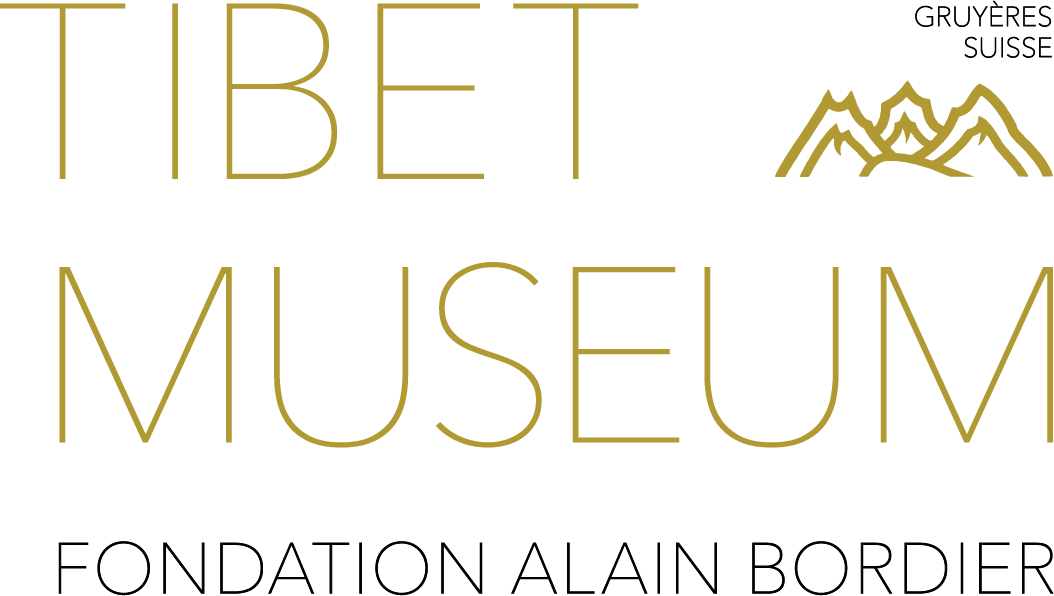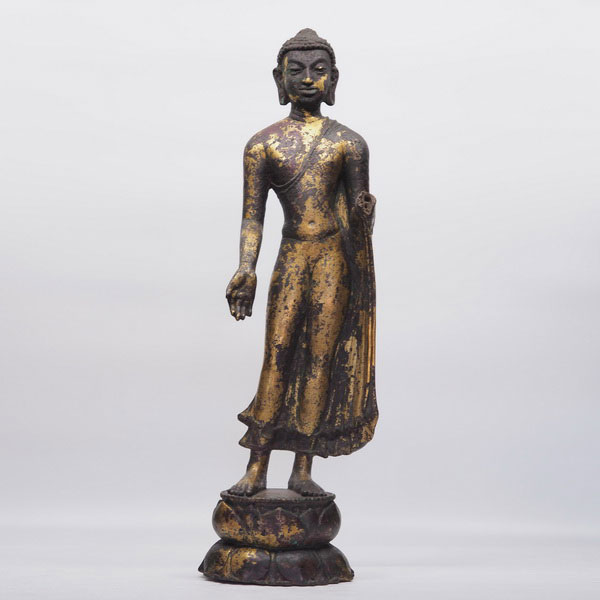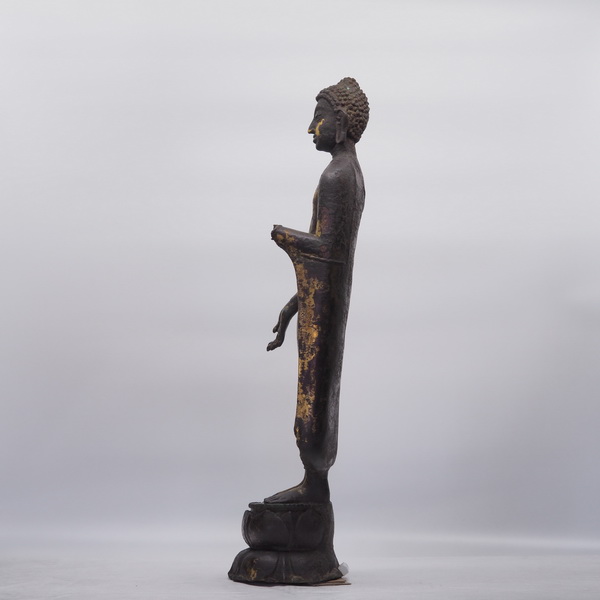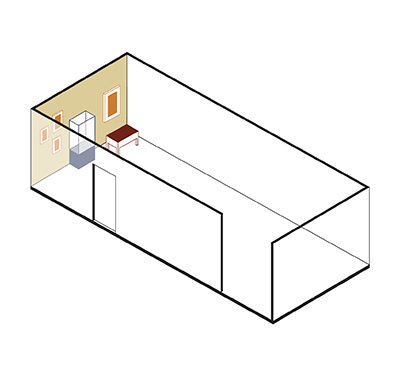ABS 303
Code: ABS 303
Country: India (north-east)
Style: Greater Bengal Region
Date: 600 - 700
Dimensions in cm WxHxD: 19.3 x 61 x 13
Materials: Gilt bronze
Standing Buddha Shakyamuni
Hollow cast in one piece.
The Buddha is standing in a slightly bent attitude on a circular double lotus pedestal. The right hand is extended in the gesture of charity (varada-mudra), and the broken left hand used to hold the edge of the monastic robe. The upper monastic garment (uttarasangha) is rendered without folds and covers the left shoulder only. The lower garment (antaravasaka) is also visible.
Gilt bronze images are rare in North-Eastern India. This image allegedly came from Tibet and was exported as a result of the Chinese annexation of Tibet and the destruction of thousands of monasteries.
Hollow cast in one piece.
The Buddha is standing in a slightly bent attitude on a circular double lotus pedestal. The right hand is extended in the gesture of charity (varada-mudra), and the broken left hand used to hold the edge of the monastic robe. The upper monastic garment (uttarasangha) is rendered without folds and covers the left shoulder only. The lower garment (antaravasaka) is also visible.
Gilt bronze images are rare in North-Eastern India. This image allegedly came from Tibet and was exported as a result of the Chinese annexation of Tibet and the destruction of thousands of monasteries.





